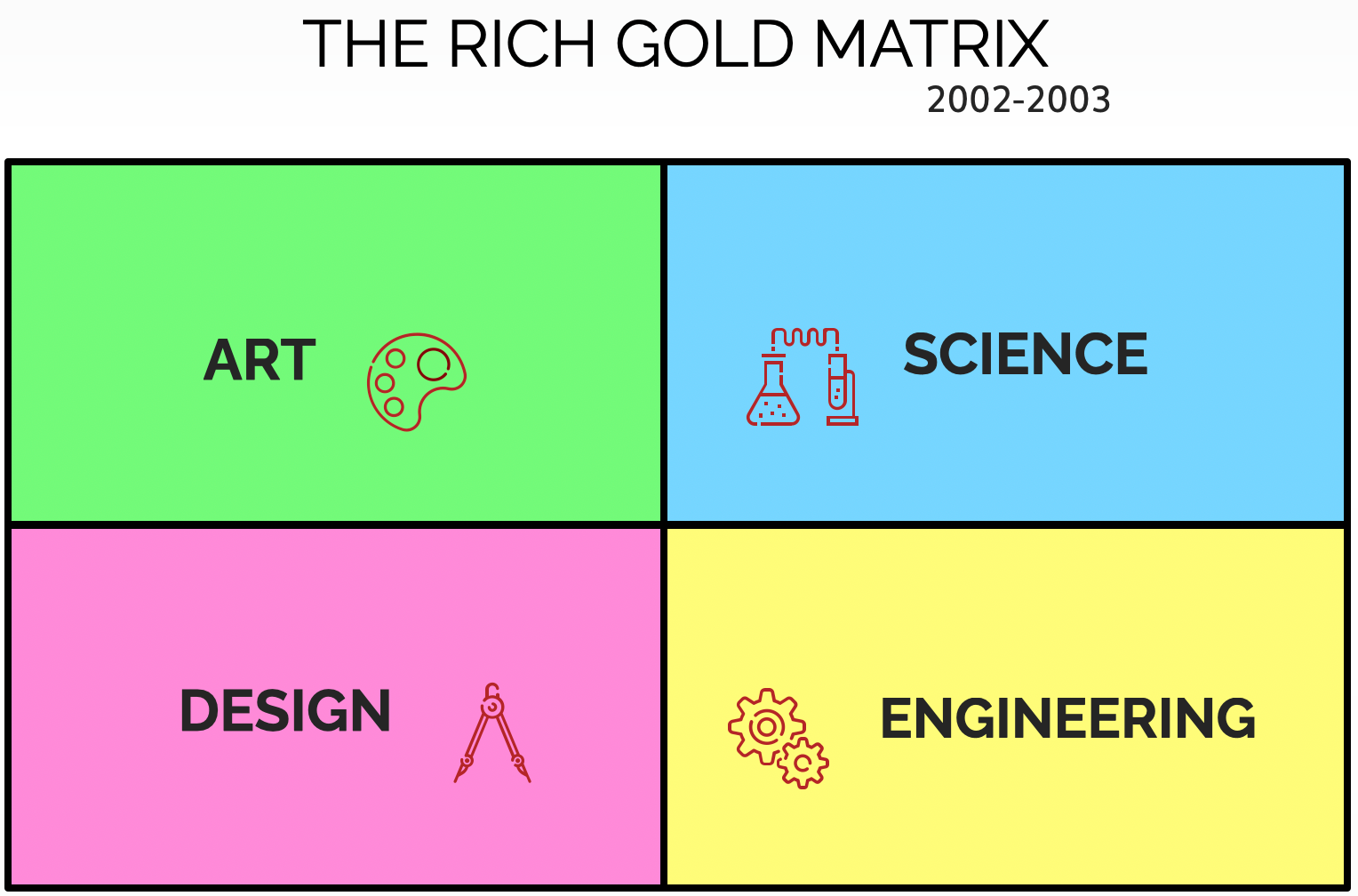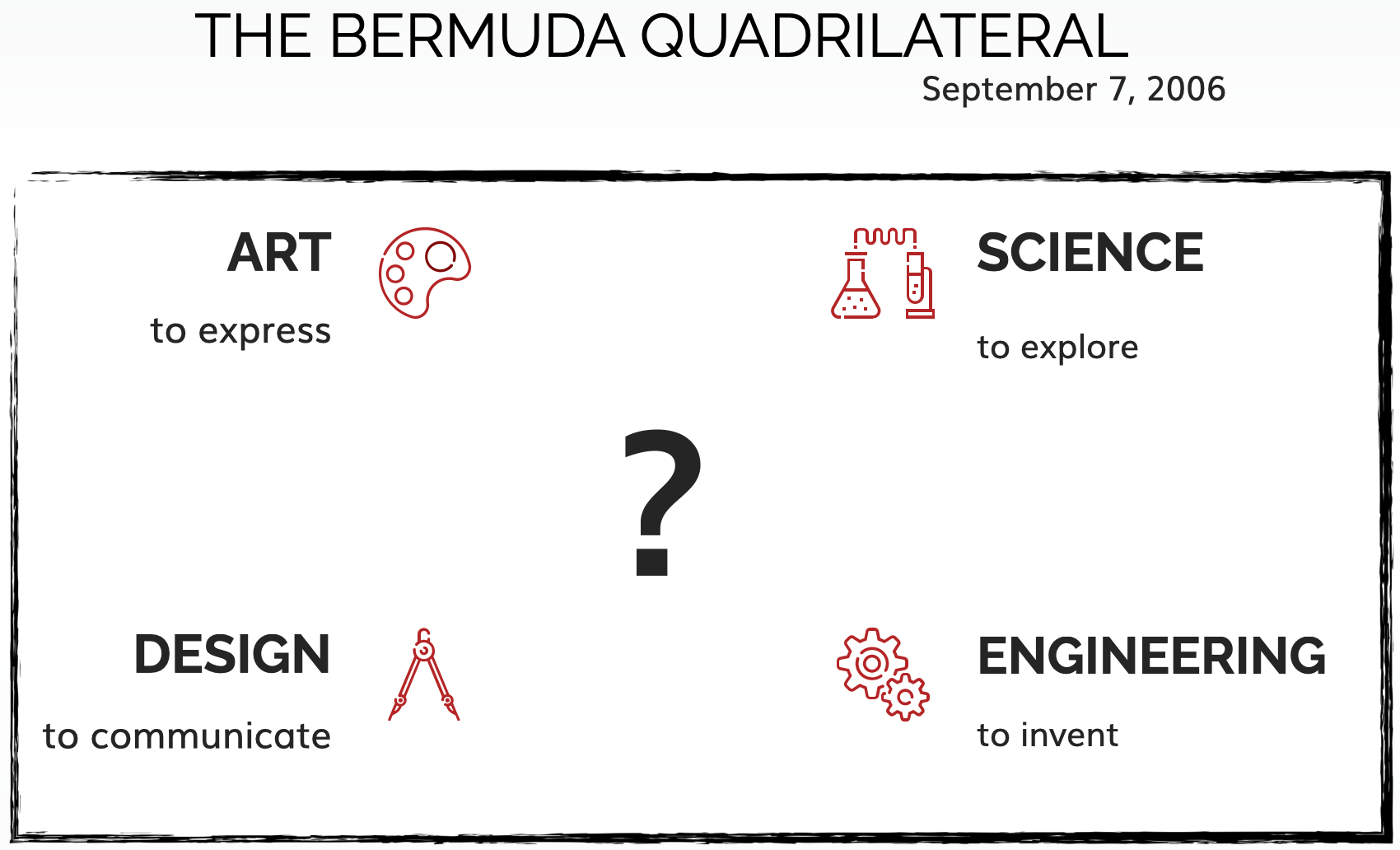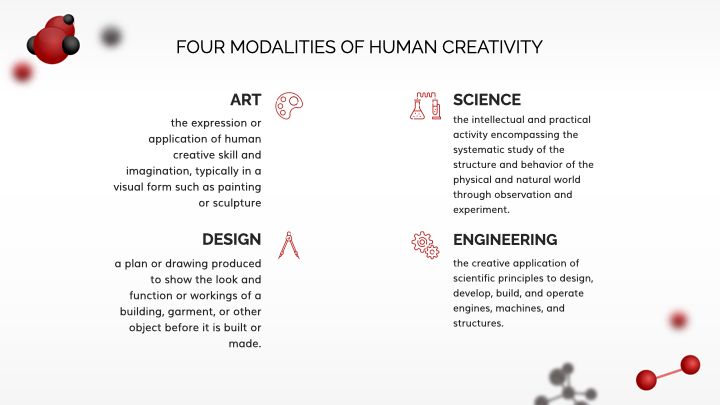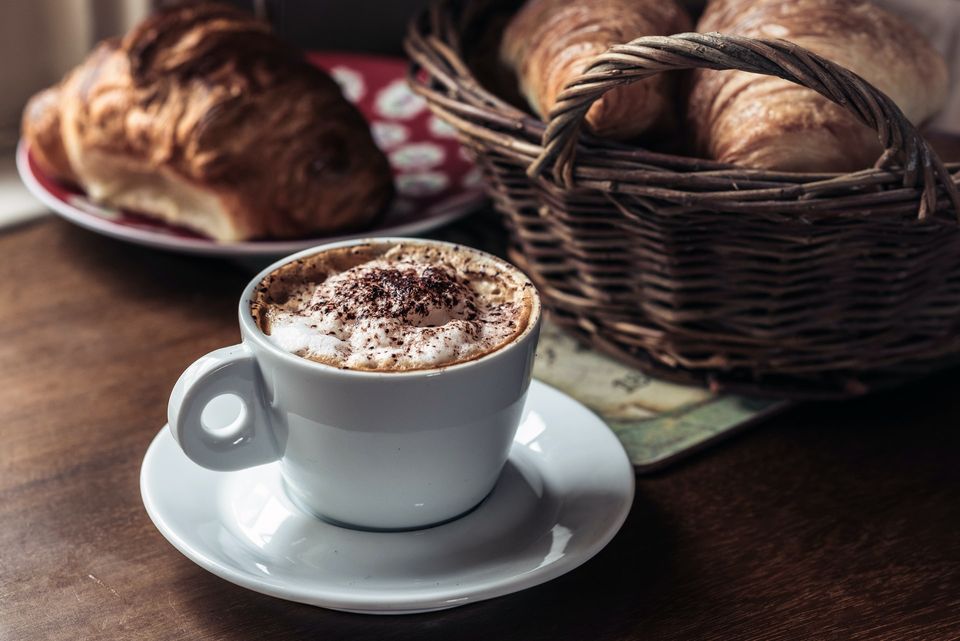Currency, Creativity, and the Bermuda Quadrilateral
Engineering draws invention from science, informs the practice of design, and is further enhanced by the reimagining of the world through works of art. All too often we think of these as singular pursuits, when in fact they are highly related and often entangled.

We often think of engineering work as separate and apart from other creative disciplines. I'd like to make the case that not only is engineering part of the creative domain, it is an integral part that draws invention from science, informs the practice of design, and is further enhanced by the reimagining of the world through works of art. All too often we think of these as singular pursuits, when in fact they are highly related and often entangled.
The Rich Gold matrix is a rectangular plot, parceled into four quadrants, each representing a lens through which the world is viewed and acted upon. Gold believed in a rigid interpretation of the world, noted by the dark lines that define each of the quadrants in the diagram below.

John Maeda takes a slightly different view of the same four modalities, and proposed an open matrix that he calls the Bermuda Quadrilateral. The name is a play on the the Bermuda Triangle — a mythical section of the Atlantic Ocean roughly bounded by Miami, Bermuda and Puerto Rico — where dozens of ships and airplanes have disappeared. A Quadrilateral is a fancy mathematical term for a simple shape, one with 4 sides, like the rectangle diagram below. Maeda referenced Bermuda because he felt that there was a mystery to untangle where these domains collided in the open matrix.

In Maeda's version there can be more movement and interpretation between disciplines as well as the potential for tension and friction, represented here by the question mark in the center of the diagram.
The Krebs Cycle
In her 2016 article Age of Entanglement, MIT professor and multi-disciplinary designer Neri Oxman draws inspiration from chemistry to define a cycle of creativity. Her model begins by making an observation on the work by both Maeda and Gold.
"knowledge can no longer be ascribed to, or produced within, disciplinary boundaries, but is entirely entangled … where one realm can incite (r)evolution inside another"
-Neri Oxman

Oxman ponders the existence of a creative energy, a currency of sorts, that promotes transitions between creative domains. To support her thesis she refers to work done by 1953 Nobel prize laureate Hans Krebs on the cycle of cellular respiration. His theories describe how our bodies generate energy from sugar in the foods we eat to power the processes our cells carry out, like muscle contraction or cell division.
The Krebs Cycle is an eight step process that defines the regenerative steps by which energy is created that power the cells within the human body. The magic of this cycle is Adenosine Triphosphate or, for short, ATP.

Quick Science Primer
There are four major biomolecules: Carbohydrates, Lipids, Nucleic Acids, and Proteins. ATP is part of the Nucleic Acid type. This category also includes things like DNA and RNA molecules. Like all nucleic acids, ATP is made of three components: a sugar, a base, and phosphates (in this case three phosphates, hence triphosphate). Phosphates are all negatively charged, and therefore naturally repel each other, so the bond between the phosphates is rather weak.

When we combine ATP with water, a process called hydrolization, it causes the bond on those last two phosphates to fail. ATP turns into ADP (having only dual phosphates left — depicted in step 5 of the Krebs Cycle above). Since hydrolization is an exergonic reaction it also releases energy. The newly freed phosphate and free energy will be absorbed by a cell to power its functions. Here is proof of the importance of staying hydrated, water is literally used to fuel your muscles.
Thankfully, this cycle is regenerative, as ADP is carried along in the cycle and in subsequent steps is able to reform ATP when sugar is introduced, shown at the top of our diagram.
"The Krebs Cycle is akin to a metabolic clock that first generates, then consumes, then regenerates currency in the form of ATP over time." -Neri Oxman
The Krebs Cycle of Creativity (KCC)
Oxman now applies a similar cycle to the four creative modalities which she entitles the Krebs Cycle of Creativity (KCC). In her model our creative currency is called Cre-ATP, for creative ATP. At the center of the KCC model is a circle that spans the four modalities of creativity and adds additional detail to show the entanglement of creativity along the boundaries of these domains. As you cross a boundary, intellectual energy creates currency (Cre-ATP) which is then spent, propelling the activity into the adjacent domain.

Starting in the upper right corner, the role of Science is to observe, explain, and predict the world; moving clockwise, it converts information into knowledge.
Bring our attention Southward, the role of Engineering is to apply scientific knowledge to the development of solutions to real-world problems; it converts knowledge into utility.
The role of Design is to actualize tangible deliverables that facilitate ease of use and improve the human experience; it converts utility into behavior.
Finally, the role of Art is to challenge human behavior, tap into our collective consciousness, and gift us new lenses from which to view the world around us; it converts behavior into new perceptions of information, completing the regeneration needed by "re-presenting the data that initiated the KCC in Science."

If we think of the KCC as a clock, something magical happens at the top of the clock face. Oxman describes this best, "At this ‘Cinderella moment’—when the hands of the KCC strike midnight—new perception inspires new scientific exploration." Yet our clock is unique, and the 'Cinderella moment' can happen anywhere we cross the divide between modalities. For example, between Engineering and Design we may discover a feature that inspires new ways of interaction and may change our behavior.
Unlike its biochemical model cousin, this KCC model operates bidirectionally — notice the arrows in the center of the model pointing both clockwise and counter-clockwise. Any of the four domains may generate currency that can be consumed by another domain.

Let's explore a real world example: that of the iPhone touch screen. The concept for a touch interface was initially conceived as part of the design of the device. That idea traveled counter-clockwise to Engineering to convert the desired behavior into a product that supported that utility.
To do so, Engineering needed to gain knowledge about materials such as glass, and moved the idea further counter-clockwise to Science. Where advancement in glass technologies were made to support the initial idea that originated from the Design domain.
At this point, the flow of currency reversed and from the developed product, Designers conceived of new ways to interact with a touch display, enabled from the Science and Engineering outputs. Behaviors such as pinch, or stretch to zoom, or swipe left or right.
We get generate an excess of CreATP for free when we become experts and improve our processes of integration. This is desirable because producing enough Cre-ATP may allow us to jump domains. Bending time in either direction, enabling time travel. Here are two examples ...
- Our understanding of the way insects move from the Science domain may rouse Designers to envision new ways to conceive artificial limbs. In this case the CreATP jumping from the Northeastern quadrant to the Southwestern.
- Or an unusually inspiring artistic drawing may produce enough currency for Engineers to convert perceptions of the future into utilities for today. CreATP leaping from the perception of the Artistic domain to the utility of the Engineering realm.

There are hemispheres to explore within the KCC. Design and Art, on the left side of the model, question our belief systems and offer new suppositions about the world that contribute to what we refer to as Culture. On the right half of the model we have Science and Engineering, which both describe and predict phenomena within the physical world, what we refer to as Nature. The east to west axis from Culture to Nature, takes us from behaviors to knowledge and back again.
Now let's split the model in half horizontally. In Oxman's words, "The north marks the climax of human exploration into the unknown. The farther north, the more theoretical (or philosophical) the regime." The North to South axis leads us from the upper hemisphere of Perception to to the lower hemisphere of Production, where the utility of the combined forces of Design and Engineering reign. Again in Oxman's words, "The south marks the products and outcomes associated with new creative solutions and deployments based on exploration. The farther south, the more applied (or economic) the regime." Along this Heaven to Earth axis, one travels from understanding, describing, and predicting — to creating new ways of using and experiencing.
Conclusion
The way we view our creative environment, and interact within it, is ultimately dependent on the lens through which we choose to see it. We must remember that these four domains of creative exploration have been created by us. We break down the complex world into convenient categories so we can focus and develop deep expertise. We use these simplified declarations to help us grasp a world with numerous dependencies and limitless variables and outcomes. These artificial definitions are not how we experience the world however, our experiences are deeply entangled between and betwixt all modalities. We have to be careful not to fall into the trap of thinking that the world actually operates by the rules of by which we define our domain expertise.
This model also highlights that we get our creative nourishment from other domains. We should seek inspiration from each modality, leveraging the great work of our peers and applying the currency they create to advance the solutions we develop. By doing so, we, too, produce a currency that others can then replenish with and be inspired by.


